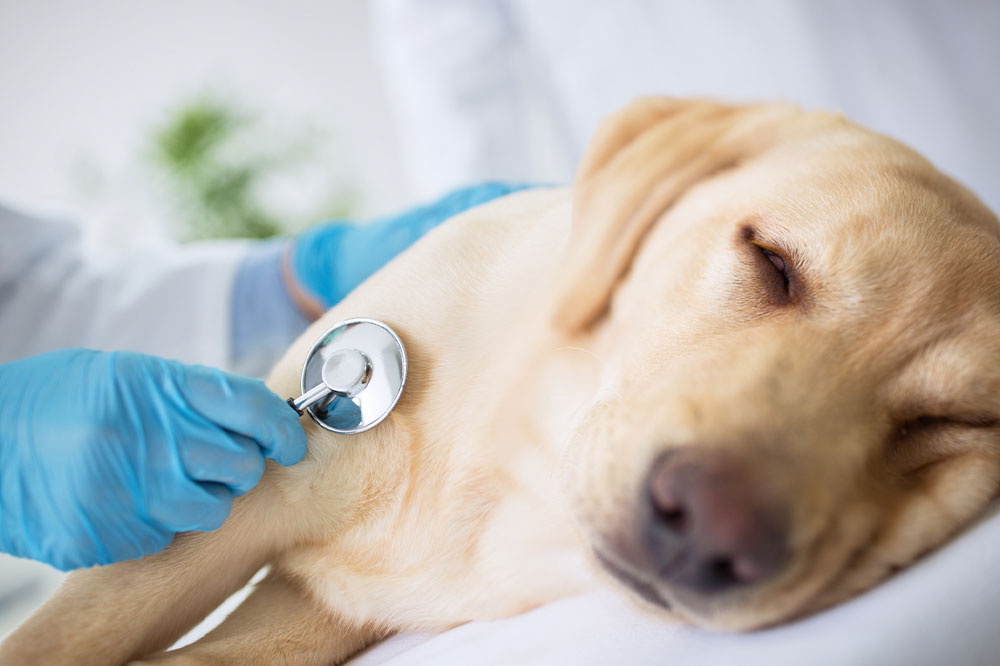
10 Signs of Illness to Look Out for in Dogs
Although pets cannot speak, they still communicate in other ways. If your dog feels ill, they may display signs of discomfort through subtle changes in their personality and mood. So, the key to knowing when your dog is sick is to look out for the signs. While this can prove difficult in older pets, you must look for the indicators. Read on to understand the 10 signs of sickness to look out for in your pet dog.
Top 10 signs your dog is sick
Lower energy levels
Taking your dog for a walk can tire them out, but if you notice that your furry friend is consistently lacking energy, it can be a sign that something is wrong. The symptoms can be something as simple as decreased playfulness and lethargy. In such cases, it’s considered best to consult a veterinarian. This way, you can ensure a thorough examination of your dog’s overall health.
Changes in urination
Most trained dogs will not urinate around the house. So, when outside on your daily walk together, you must look for certain signs, such as changes in urine volume, blood in the urine, and strain while urinating. Especially in older dogs.
Excessive urination can be a sign of kidney issues or diabetes mellitus, and blood in the urine could signify urinary tract infections or stones in the bladder. In rare cases, it can also indicate cancer.
Low appetite
It’s common for dogs to eat less than usual when they’re sick. However, it’s important to remember that some health problems may be more severe than others. For instance, in the case of dental disease, your dog may not eat much food even if they want to. You can try feeding your dog some of their favorite treats in such cases. You can also let your pet eat a tiny amount of cooked chicken if needed.
But you must remember if the problem persists for more than a day, it’s best to seek the advice of a veterinarian.
Vomiting or diarrhea
One of the most common signs indicating your dog is sick is vomiting or diarrhea. While the problems can be life-threatening in some cases, they can be considered mild in others. Some of the main reasons for this health issue are sudden meal changes, bacterial or viral infections, indigestion, motion sickness, and parvovirus ( in puppies). So, if your dog has one episode of diarrhea or vomiting and then feels normal, you must keep an eye out for any progression of the symptoms.
You must feed them small amounts of bland food such as boiled chicken with rice during that time.
Change in drinking habits
When not feeling well, your dog can have subtle changes in drinking habits. While a decreased water consumption can signify the development of various diseases, like bladder infections and UTIs, an increased thirst usually indicates diabetes, kidney disease, fever, and hormone issues.
So, always monitor the amount of water your dog drinks. If you notice any reduction, you can try adding more water bowls around the house.
Wheezing, coughing, or trouble breathing
Most respiratory issues can have symptoms like coughing, wheezing, and trouble breathing. In some cases, it can be a simple cold. But in other circumstances, your dog can have illnesses such as heart failure and kennel cough. Additionally, if you can hear a honking noise when your dog breaths, it could be a sign of a common health issue known as tracheal collapse.
Moreover, if you come across a blue tint on your dog’s gums and tongue, it can be a medical emergency. So, always consult your veterinarian if a cough persists.
Dry or dull coat
A dull coat is a telltale sign of illness in dogs. Typically, a dry or dull coat can be noticed when your dog is going through health issues like nutritional deficiencies, allergies, and dehydration. In such cases, you must consult your veterinarian at the earliest. This can help your dog receive early diagnosis and treatment.
If needed, you can care for your dog by brushing their hair, removing all signs of dead hair, and utilizing a conditioner to keep the coat shiny.
Personality changes
If your dog is ill or in pain, they can communicate discomfort through behavioral changes. For instance, a once playful dog can suddenly become aggressive. But not all dogs display negative behavior. Some can become clingy and needy as well.
In such cases, you must further monitor your dog and be cautious of other symptoms such as abdominal pain, lameness, and strain while urinating.
Lack of social interaction
Generally, even friendly and outgoing dogs can have sudden changes in their personalities. So, if your dog has suddenly become withdrawn and remains in a single place for a long time, it could mean they are sick.
Therefore it’s important to be wary of changes in your dog’s social interactions. In case you notice anything, you must give them the needed attention and care.
Itchy skin or hair loss
When you groom your dog and see hair falling out unexpectedly, it could indicate a skin infection, allergies, or fleas, especially if your dog is also scratching a lot. To prevent these issues, it’s important to regularly check your dog’s skin and coat for fleas and flea dirt, which looks like freshly ground pepper. Watch out for any strange smells, discharge, redness, swelling, or discomfort. Mild cases can be addressed with a bath, but severe cases require a vet’s attention.
During the consultation, it is important to provide the professional with your dog’s complete medical history. This can include previously performed medical procedures, identified allergies, and current symptoms that your furry companion may be experiencing. This information will enable the professional to formulate an accurate diagnosis and provide the appropriate treatment plan.


